List of governors-general of India
The Regulating Act of 1773 created the office with the title of Governor-General of Presidency of Fort William, or Governor-General of Bengal to be appointed by the Court of Directors of the East India Company (EIC).The Court of Directors assigned a Council of Four (based in India) to assist the Governor General, and decision of council was binding on the Governor General during 1773-1784.
The Saint Helena Act 1833 (or Government of India Act 1833) re-designated the office with the title of Governor-General of India.
After the Indian Rebellion of 1857, the company rule was brought to an end, but the British India along with princely states came under the direct rule of the British Crown.The Government of India Act 1858 created the office of Secretary of State for India in 1858 to oversee the affairs of India, which was advised by a new Council of India with 15 members (based in London). The existing Council of Four was formally renamed as the Council of Governor General of India or Executive Council of India. The Council of India was later abolished by Government of India Act 1935.
Following the adoption of the Government of India Act of 1858, the Governor-General as representing the Crown became known as the Viceroy. The designation 'Viceroy', although it was most frequently used in ordinary parlance, had no statutory authority, and was never employed by Parliament. Although the Proclamation of 1858 announcing the assumption of the government of India by the Crown referred to Lord Canning as "first Viceroy and Governor-General", none of the Warrants appointing his successors referred to them as 'Viceroys', and the title, which was frequently used in Warrants dealing with precedence and in public notifications, was basically one of ceremony used in connection with the state and social functions of the Sovereign's representative. The Governor-General continued to be the sole representative of the Crown, and the Government of India continued to be vee appointments of Governor-General of India were made by the British Crown upon the advice of Secretary of State for India. The office of Governor-General continued to exist as a ceremonial post in each of the new dominions until they adopted republican constitutions in 1950 and 1957 respectively.
List of Governors-General
| Portrait | Name (Birth–Death) |
Term of office | Notable events | Appointer | |
|---|---|---|---|---|---|
| Before 1773 Governor General of the Presidency of Fort William (Bengal) was named as Governor of Bengal, which was in existence since 1757 to 1772.
For the list of Governors of Bengal see List of governors of Bengal. | |||||
| Governors General of the Presidency of Fort William (Bengal), 1773–1833 | |||||
 |
Warren Hastings (1732-1818) |
20 October 1773 [nb 1] |
8 February 1785 |
|
East India Company 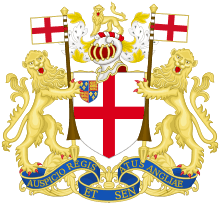 (1773–1858) |
_by_anonymous_(circa_1772-1792).jpg) |
John Macpherson (acting) (1745–1821) |
8 February 1785 |
12 September 1786 |
||
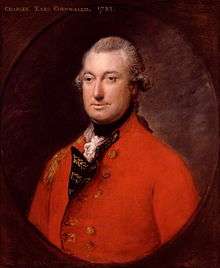 |
Charles Cornwallis The Marquess Cornwallis [nb 2] (1738–1805) |
12 September 1786 |
28 October 1793 |
| |
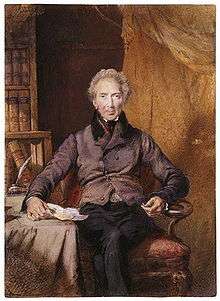 |
John Shore (1751–1834) |
28 October 1793 |
18 March 1798 |
| |
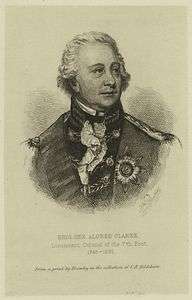 |
Alured Clarke (acting) (1744–1832) |
18 March 1798 |
18 May 1798 |
||
| Richard Wellesley, Earl of Mornington [nb 3] (1760–1842) |
18 May 1798 |
30 July 1805 |
| ||
 |
The Marquess Cornwallis (1738–1805) |
30 July 1805 |
5 October 1805 |
||
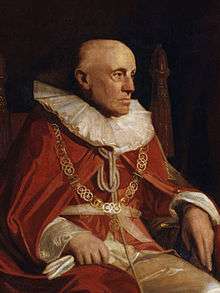 |
Sir George Barlow, Bt (acting) (1762–1847) |
10 October 1805 |
31 July 1807 |
| |
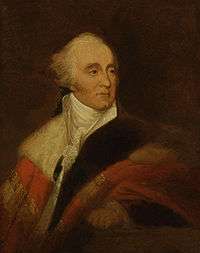 |
The Lord Minto (1751–1814) |
31 July 1807 |
4 October 1813 |
| |
.jpg) |
Francis Rawdon-Hastings, 1st Marquess of Hastings [nb 4] (1754–1826) |
4 October 1813 |
9 January 1823 |
| |
| John Adam (acting) (1779–1825) |
9 January 1823 |
1 August 1823 |
| ||
 |
The Lord Amherst[nb 5] (1773–1857) |
1 August 1823 |
13 March 1828 |
| |
| William Butterworth Bayley (acting) (1782–1860) |
13 March 1828 |
4 July 1828 |
|||
| Governors-General of India, 1833–1858 | |||||
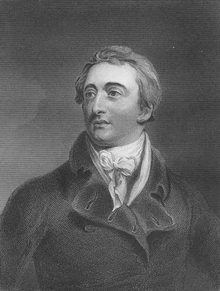 |
Lord William Bentinck (1774–1839) |
4 July 1828 |
20 March 1835 |
|
East India Company  (1773–1858) |
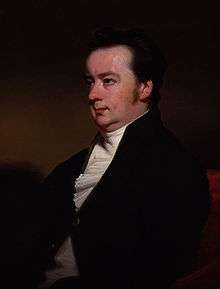 |
Charles Metcalfe, Bt (acting) (1785–1846) |
20 March 1835 |
4 March 1836 |
| |
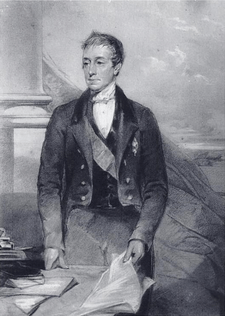 |
The Lord Auckland[nb 6] (1784–1849) |
4 March 1836 |
28 February 1842 |
| |
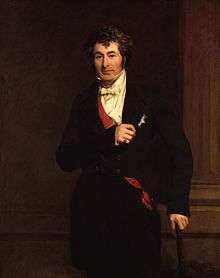 |
The Lord Ellenborough (1790–1871) |
28 February 1842 |
June 1844 |
| |
| William Wilberforce Bird (acting) (1784–1857) |
June 1844 |
23 July 1844 |
|||
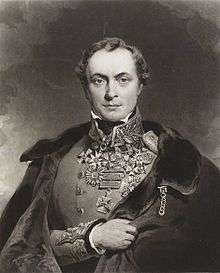 |
Henry Hardinge[nb 7] (1785–1856) |
23 July 1844 |
12 January 1848 |
| |
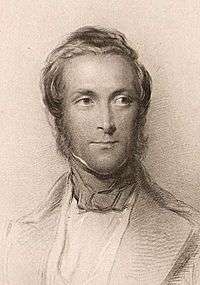 |
The Earl of Dalhousie[nb 8] (1812–1860) |
12 January 1848 |
28 February 1856 |
| |
 |
The Viscount Canning[nb 9] (1812–1862) |
28 February 1856 |
31 October 1858 |
| |
| Governors-General and Viceroys of India, 1858–1947 | |||||
 |
The Viscount Canning[nb 10] (1812–1862) |
1 November 1858 |
21 March 1862 |
|
Victoria.svg.png) (1837–1901) |
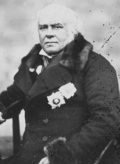 |
The Earl of Elgin (1811–1863) |
21 March 1862 |
20 November 1863 |
| |
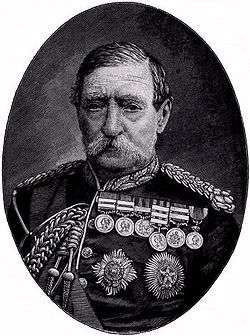 |
Robert Napier (acting) (1810–1890) |
21 November 1863 |
2 December 1863 |
||
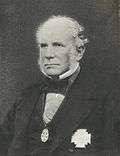 |
William Denison (acting) (1804–1871) |
2 December 1863 |
12 January 1864 |
||
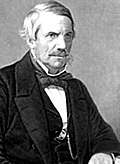 |
Sir John Lawrence, Bt (1811–1879) |
12 January 1864 |
12 January 1869 |
| |
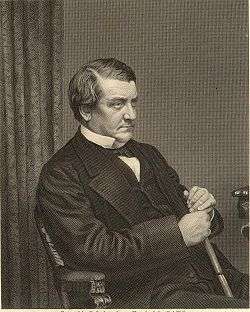 |
The Earl of Mayo (1822–1872) |
12 January 1869 |
8 February 1872 |
| |
 |
Sir John Strachey (acting) (1823–1907) |
9 February 1872 |
23 February 1872 |
||
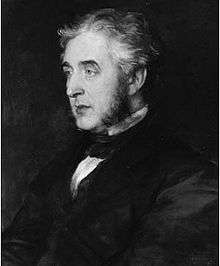 |
The Lord Napier (acting) (1819–1898) |
24 February 1872 |
3 May 1872 |
||
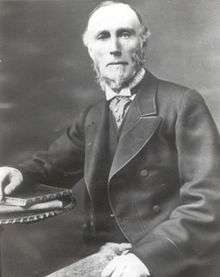 |
The Lord Northbrook (1826–1904) |
3 May 1872 |
12 April 1876 |
| |
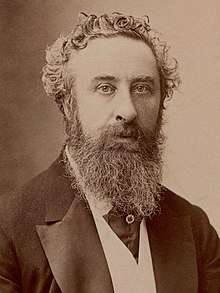 |
The Lord Lytton (1831–1891) |
12 April 1876 |
8 June 1880 |
| |
 |
The Marquess of Ripon (1827–1909) |
8 June 1880 |
13 December 1884 |
| |
 |
The Earl of Dufferin (1826–1902) |
13 December 1884 |
10 December 1888 |
| |
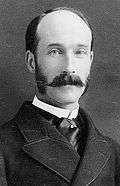 |
The Marquess of Lansdowne (1845–1927) |
10 December 1888 |
11 October 1894 |
| |
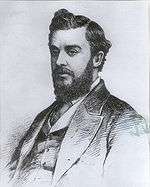 |
The Earl of Elgin (1849–1917) | 11 October 1894 |
6 January 1899 |
| |
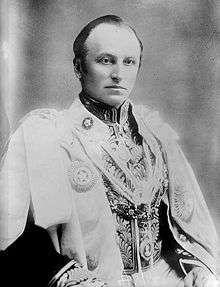 |
The Lord Curzon of Kedleston[nb 11] (1859–1925) |
6 January 1899 |
18 November 1905 |
| |
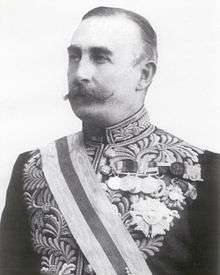 |
The Earl of Minto (1845–1914) |
18 November 1905 |
23 November 1910 |
|
Edward VII.svg.png) (1901–1910) |
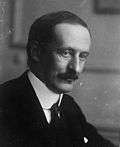 |
The Lord Hardinge of Penshurst (1858–1944) |
23 November 1910 |
4 April 1916 |
|
George V.svg.png) (1910–1936) |
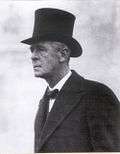 |
The Lord Chelmsford (1868–1933) |
4 April 1916 |
2 April 1921 |
| |
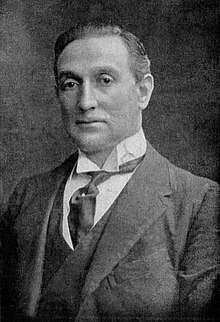 |
The Earl of Reading (1860–1935) |
2 April 1921 |
3 April 1926 |
| |
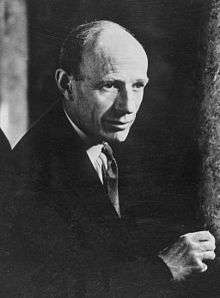 |
The Lord Irwin (1881–1959) |
3 April 1926 |
18 April 1931 |
| |
 |
The Earl of Willingdon (1866–1941) |
18 April 1931 |
18 April 1936 |
| |
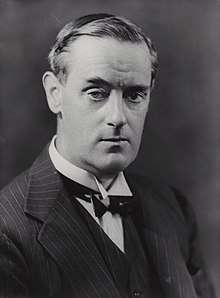 |
The Marquess of Linlithgow (1887–1952) |
18 April 1936 |
1 October 1943 |
|
Edward VIII.svg.png) (1936) |
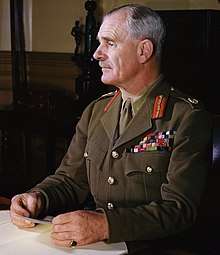 |
The Viscount Wavell (1883–1950) |
1 October 1943 |
21 February 1947 |
|
George VI.svg.png) (1936–1952) |
.jpg) |
The Viscount Mountbatten of Burma (1900–1979) |
21 February 1947 |
15 August 1947 |
||
| Governors-General of the Dominion of India, 1947–1950 | |||||
.jpg) |
The Viscount Mountbatten of Burma[nb 12] (1900–1979) |
15 August 1947 |
21 June 1948 |
|
George VI.svg.png) (1936–1952) |
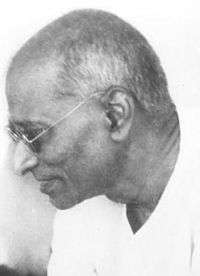 |
Chakravarti Rajagopalachari (1878–1972) |
21 June 1948 |
26 January 1950 |
| |
- Notes
- Originally joined on 28 April 1772
- Earl Cornwallis from 1762; created Marquess Cornwallis in 1792.
- Created Marquess Wellesley in 1799.
- Earl of Moira prior to being created Marquess of Hastings in 1816
- Created Earl Amherst in 1826.
- Created Earl of Auckland in 1839.
- Created Viscount Hardinge in 1846.
- Created Marquess of Dalhousie in 1849.
- Created Earl Canning in 1859.
- Created Earl Canning in 1859.
- The Lord Ampthill was acting Governor-General in 1904
- Created Earl Mountbatten of Burma on 28 October 1947.
See also
- List of governors of Bengal
- Council of India
- Secretary of State for India
- List of Presidents of India
- Governor general
Citations
- Clarke, John James (1 January 1997). Oriental Enlightenment: The Encounter Between Asian and Western Thought. Psychology Press. ISBN 9780415133753.
- Roorkee Engineering College
- Day B., Richard & Gaido Daniel (2009). Witnesses to Permanent Revolution: The Documentary Record. London: LEIDEN • BOSTON. p. 406. ISBN 978 90 04 167704.